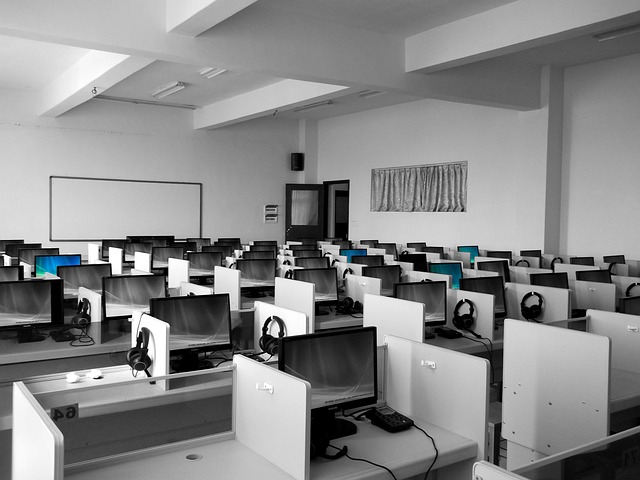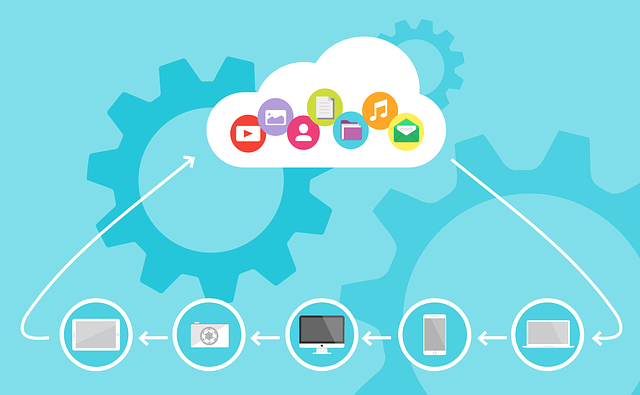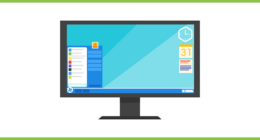Grid computing is a type of distributed computing that uses a network of computers to share resources. Cloud computing is a type of distributed computing that uses a network of servers to provide resources. Grid computing and cloud computing are similar in that they both use networks of computers to share resources. Grid computing typically uses a static network of computers, while cloud computing uses a dynamic network of servers. Grid computing typically involves sharing resources such as processing power or storage, while cloud computing typically involves providing access to applications or services.
What is grid computing?
(Image by David Mark from Pixabay )

Grid computing is a type of distributed computing that involves sharing compute resources across a network. Grid computing is often used to solve large-scale problems that require more computational power than a single computer can provide.
The term “grid” in grid computing refers to the fact that the compute resources are shared among many different computers, or nodes. When a grid computing system is set up, each node is configured to work together to solve a problem. This means that each node must have access to the same data and be able to communicate with each other.
Grid computing can make use of idle resources. If one node in a grid has extra capacity, it can be used to help solve the problem. This can be done automatically by the system, or manually by an administrator. It is also scalable. If a problem requires more computational power than what’s available on a single node, additional nodes can be added to the grid. This makes grid computing very flexible and able to handle problems of varying size.
What is cloud computing?
(Image by 200 Degrees from Pixabay )

Cloud computing is a type of internet-based computing that provides shared computer processing resources and data to computers and other devices on demand. It is a model for enabling ubiquitous, on-demand access to a shared pool of configurable computing resources (e.g., networks, servers, storage, applications, and services). These resources can be rapidly provisioned and released with minimal management effort or service provider interaction.
Cloud models can be deployed in a public, private, or hybrid cloud environment. Public clouds sell services to anyone on the Internet. Private clouds are internal networks dedicated to specific organizations. Hybrid clouds combine public and private clouds, bound together by technology that allows data and applications to be shared between them.
Grid computing Vs. Cloud computing – Key differences
Grid computing and cloud computing are both distributed computing models, but they have some key differences. Here are some of the main differences between grid computing and cloud computing:
Architecture:
Grid computing is a decentralized architecture that uses a network of computers to work together to solve a complex problem. Each computer in the grid contributes processing power and storage to the grid, which is managed by specialized software. In contrast, cloud computing is a centralized architecture that uses a network of remote servers to store, manage, and process data and applications.
Resource sharing:
Grid computing is focused on sharing computing resources, such as processing power and storage, across a network of computers. This allows for efficient utilization of resources and enables large-scale computing tasks to be completed. In contrast, cloud computing focuses on providing on-demand access to computing resources, such as applications and data storage, to users over the internet.
Scalability:
Grid computing is designed to scale up by adding more computers to the network to increase processing power. However, this requires a certain level of technical expertise to set up and manage the grid. Cloud computing, on the other hand, is designed to be highly scalable and can be easily expanded or contracted depending on the needs of the user.
Ownership:
In grid computing, the resources are often owned and controlled by different organizations and individuals, and they may be located in different geographic locations. In contrast, in cloud computing, the resources are typically owned and managed by a single organization, such as a cloud service provider.
Cost:
Grid computing can be less expensive than cloud computing because it typically uses existing resources and does not require additional infrastructure to be built. In contrast, cloud computing can be more expensive because it requires the purchase or rental of computing resources from a cloud service provider.
Grid computing and cloud computing are both valuable distributed computing models, but they have different architectures and use cases. Grid computing is better suited for large-scale computing tasks that require high processing power, while cloud computing is better suited for on-demand access to computing resources and applications.
How to choose the right type of computing for your needs
Here’s a breakdown of grid computing and cloud computing, and how to choose the right one for your needs.
Grid Computing:
Grid computing is a type of distributed computing that uses a network of computers to work on a common task. Each computer in the network has its own resources, but they work together to complete a larger task. Grid computing is often used for scientific or technical applications that require a lot of processing power.
Cloud Computing:
Cloud computing is a type of distributed computing that delivers services over the Internet. Cloud services are usually offered on a pay-per-use basis, meaning you only pay for the services you use. Cloud services can be used for storage, networking, software development, and more.
So, which one should you choose? It really depends on your needs. If you need lots of processing power for scientific or technical applications, grid computing may be a good option. If you need flexibility and scalability in your compute resources, cloud computing may be a better option.
The advantages and disadvantages of grid computing
Advantages:
- Increased processing power: Grid computing allows for the pooling of computing resources, which can greatly increase processing power and enable large-scale computing tasks to be completed.
- Resource sharing: Grid computing enables efficient utilization of computing resources, which can reduce the need for additional hardware and save costs.
- Scalability: Grid computing can be easily scaled up or down to meet changing needs.
- Flexibility: Grid computing can be used for a variety of applications, including scientific research, data analysis, and simulation.
- Collaboration: Grid computing can enable collaboration among geographically dispersed teams, allowing them to work together on a project.
Disadvantages:
- Complexity: Grid computing can be complex to set up and manage, requiring specialized software and technical expertise.
- Security risks: Grid computing can be vulnerable to security risks, such as unauthorized access to data or attacks on the network.
- Lack of standardization: Grid computing is not yet standardized, which can make it difficult to integrate with other computing systems and technologies.
- Dependence on network performance: Grid computing performance is heavily dependent on network performance, which can be impacted by a variety of factors, including network congestion and latency.
- Limited availability: Grid computing resources may not always be available, especially if they are in high demand or if the network experiences problems.
Overall, grid computing can be a powerful tool for large-scale computing tasks, but it requires careful consideration of the benefits and drawbacks, and careful management to ensure the system is secure and reliable.
The advantages and disadvantages of cloud computing
Advantages:
- Scalability: Cloud computing allows for the rapid scaling up or down of computing resources as needed, providing flexibility and cost savings.
- Accessibility: Cloud computing provides access to computing resources from anywhere with an internet connection, allowing for remote work and collaboration.
- Cost savings: Cloud computing eliminates the need for on-premises computing infrastructure, reducing capital expenditures and maintenance costs.
- Reliability: Cloud computing providers typically offer high levels of uptime and reliability, ensuring that computing resources are available when needed.
- Automatic updates: Cloud computing providers often handle software updates and patches automatically, ensuring that software is up-to-date and secure.
Disadvantages:
- Security risks: Cloud computing introduces security risks, including data breaches and hacking attacks, that must be carefully managed.
- Dependency on service provider: Cloud computing users are reliant on the service provider’s infrastructure and performance, which can impact availability and performance.
- Limited control: Cloud computing users have limited control over the infrastructure and software, which can limit customization and integration with other systems.
- Data storage concerns: Cloud computing providers store data on remote servers, which can raise concerns about data ownership, privacy, and regulatory compliance.
- Internet dependence: Cloud computing requires an internet connection, which can be a limitation in areas with poor connectivity or during network outages.
Overall, cloud computing can provide significant benefits, including scalability, accessibility, and cost savings, but it also introduces security risks and limitations on control and customization that must be carefully managed.
Why is cloud computing more flexible than grid computing?
Grid computing and cloud computing are often confused because they both involve the use of distributed resources. However, there are key differences between the two that impact flexibility.
Cloud computing is more flexible than grid computing for a few reasons.
First, cloud architectures can be easily scaled up or down to meet changing needs. This scalability is due in part to the fact that cloud resources are not tied to specific physical locations. They can be quickly and easily provisioned as needed from a pool of shared resources.
Second, cloud computing platforms offer a greater variety of services than grid systems. This means that organizations can mix and match services to create the perfect solution for their needs. For example, a company might use one provider for storage, another for compute, and yet another for networking.
Third, cloud providers typically offer more robust management tools than grid systems. This includes features like monitoring, logging, and billing that make it easier to track usage and keep costs under control.
Fourth, clouds tend to be more reliable than grids due to their design. For example, clouds typically have built-in redundancy at multiple levels (e.g., hardware, data, power) to ensure availability in the event of outages or failures.
Overall, these advantages make cloud computing more flexible than grid systems for meeting changing needs.








